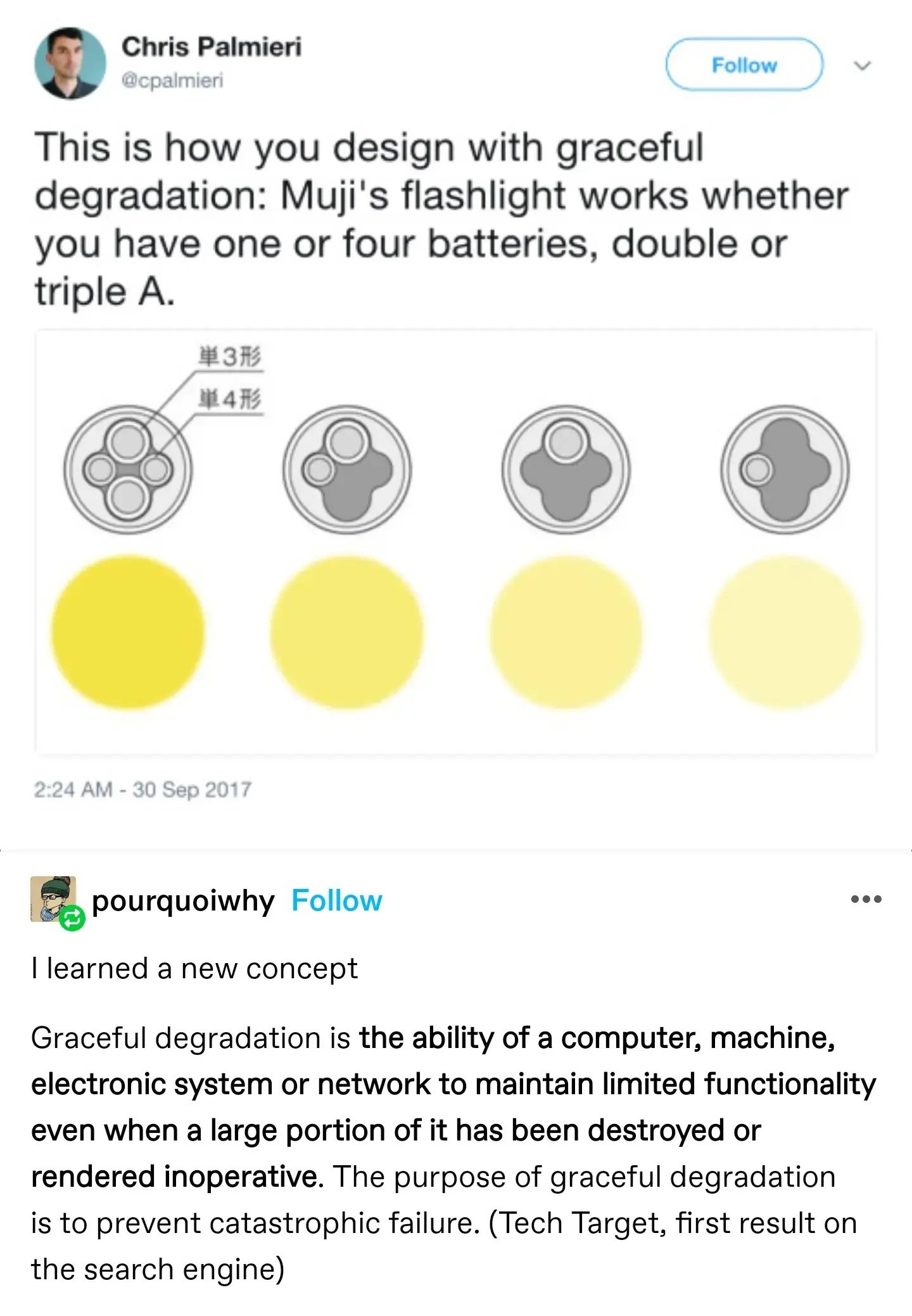this post was submitted on 14 Oct 2023
733 points (95.8% liked)
Buy it for Life
4636 readers
3 users here now
A place to share practical, durable and quality made products that are made to last, with an emphasis on upcycled and sustainable products!
Guidelines:
Things that are well-made and durable (even if they won't last a lifetime) are A-Okay!
Unlike that other BIFL place, Home-made and DIY items are encouraged here, as long as some form of instruction is included in the body of the post.
Videos links are not allowed as post titles, but you may use them in a text post.
A limited amount of self-promotion is accepted, IF the item you are selling aligns with this criteria:
- The item must be made with sustainable or recycled materials.
- If electronic in some way, the item must be open-source.
- The item must be user-serviceable (if applicable).
- You cannot be a large corporation.
- The post must be clearly marked with a [Self Promotion] tag in your title.
founded 2 years ago
MODERATORS
you are viewing a single comment's thread
view the rest of the comments
view the rest of the comments


This was posted in another community recently, so I'm copying my comment from that:
I'm interested in any good examples of hidden design you can think of.
I'm assuming you listen to the podcast 99% invisible?
I don't actually, I never really got into podcasts for some reason, exception is I do end up watching wvfrm but nothing else.
As for good examples of invisible design, there is nothing that I can think off the top of my head, I guess it's just as invisible to me. Jokes aside, the only example coming to my head rn is not the best example, it's of the slit in old macbooks for activity indication light (IIRC). It was so thin that it was literally invisible to the naked eye unless the light was shining, so it's kind of playing up to the concept itself, in turn making it noticeable and not actually following the principle I mentioned.
After racking my brain quite a bit I did come up with an example: pinch to zoom, it's very high level as an example but you would realise it's intuitiveness if you have ever seen someone try to apply it to the real world. Invisible design is an issue because of this, because it's supposed to get out of the way and so you just don't notice in day to day life, it only becomes noticeable when it suddenly is not there.
Escalators vs elevators is maybe a good example of the concept in theory, but in practice escalators are the worse design of the two, and they don't necessarily compete anyway.
Escalators are either slightly faster stairs or stairs for the sedentary. Their only practical advantage is clearing high-volume areas quickly, like transit stations. But otherwise, they are worse stairs - costly, narrow, power consuming mechanical stairs that require regular maintenance. Elevators are an accessibility feature. They allow easy movement of the handicapped and large cargo, and can move many, many floors quickly. Nobody is taking escalators to the 57th floor of a building.
Not to say escalators don't have that advantage of failing in a useful way, just that they don't do anything stairs don't already do. Nothing else really does what elevators do.
Better example may be, say, ebikes or hybrid cars, provided they don't lock up the conventional drive system in the event the electric portion fails.
Agreed, as I mentioned that's the context in which I learnt of the concept, maybe because it's the easiest to grasp for a layman, but it's certainly not the best as you demonstrated. I still would probably use it to explain because it's a known quantity, but I agree with your point.